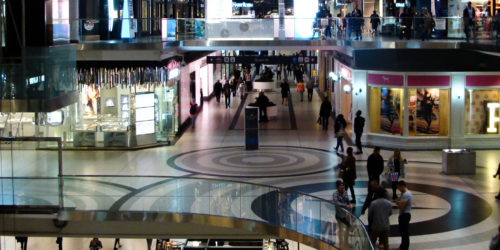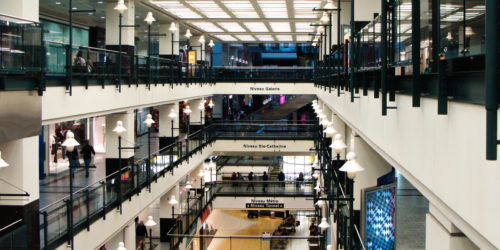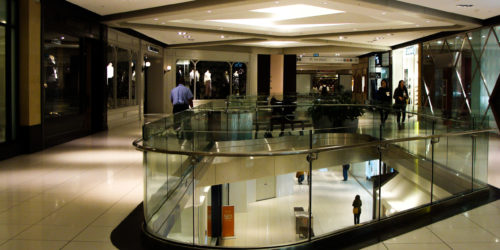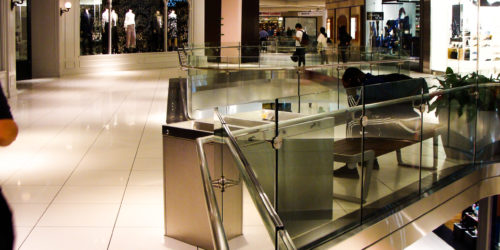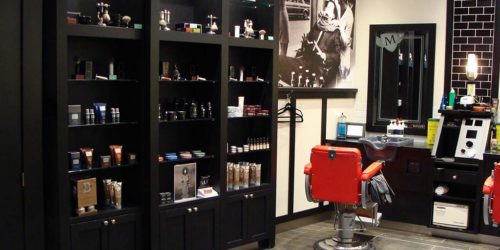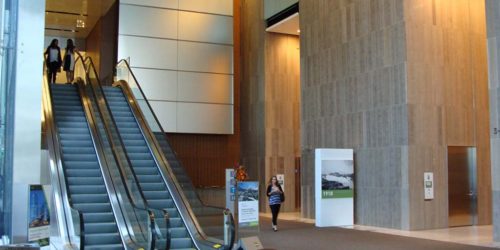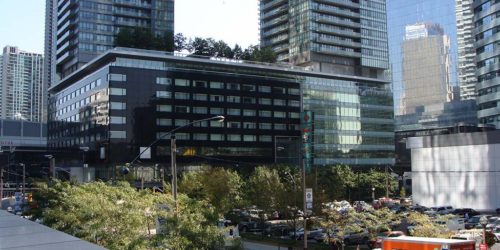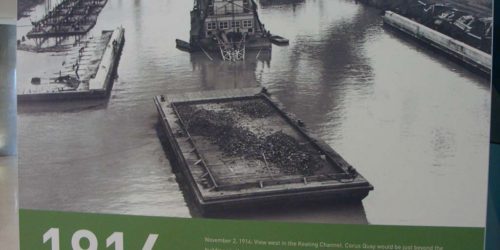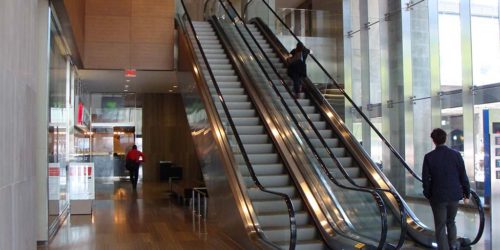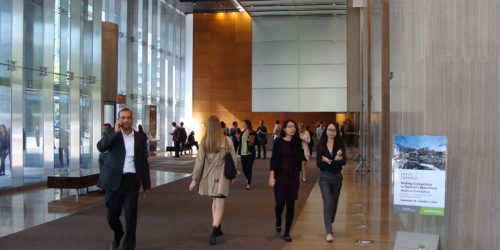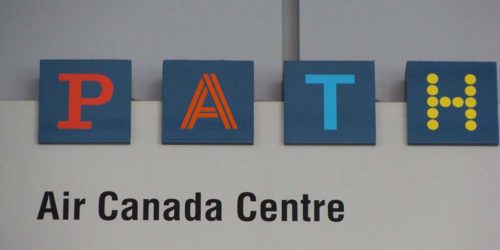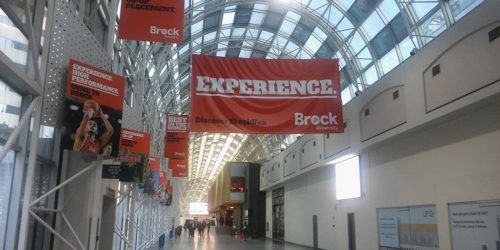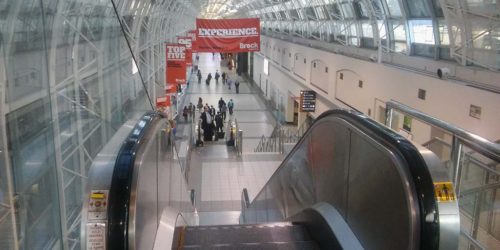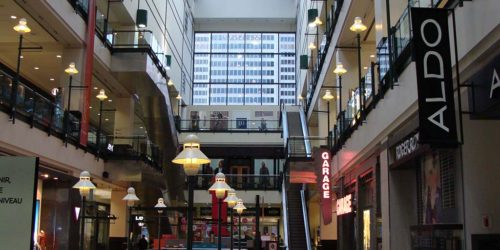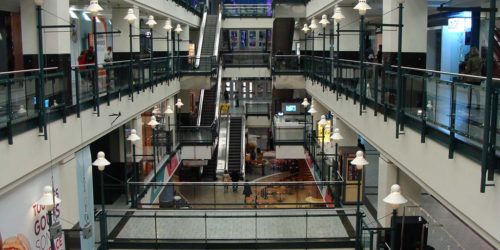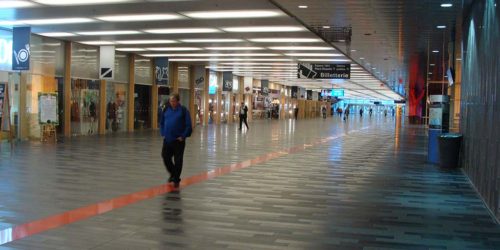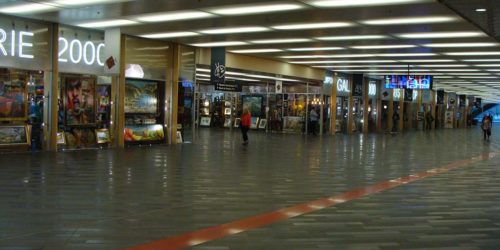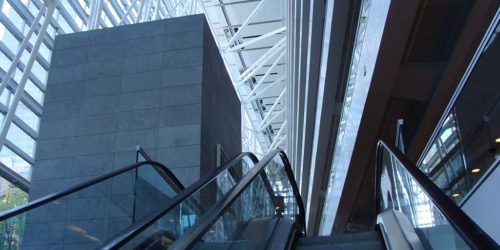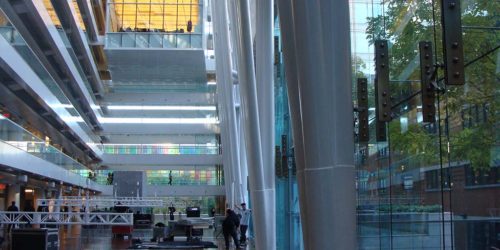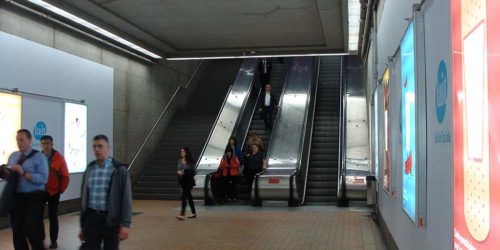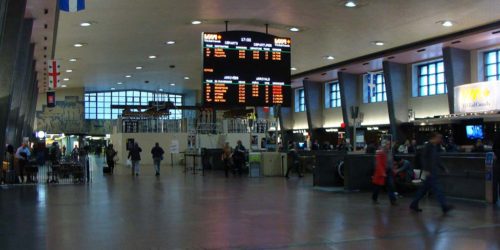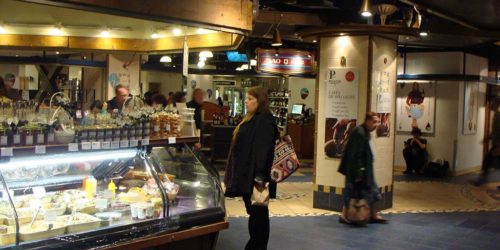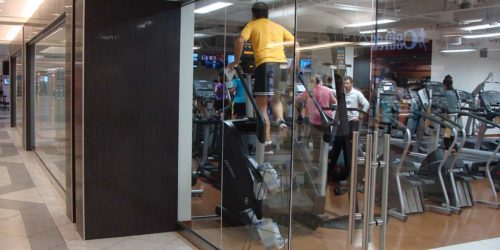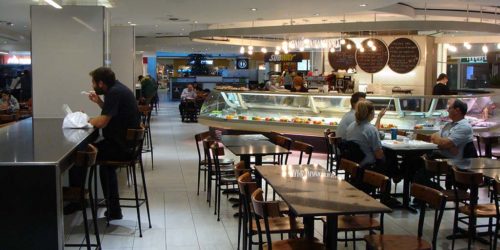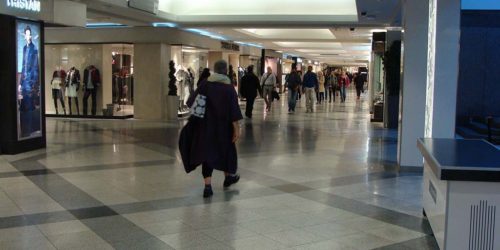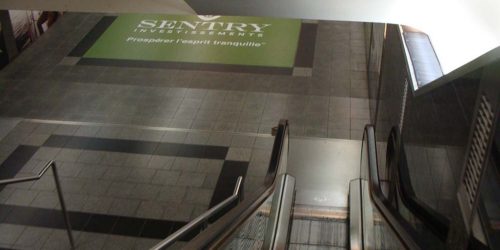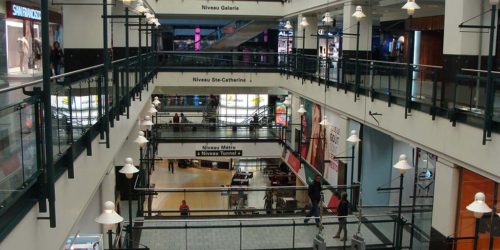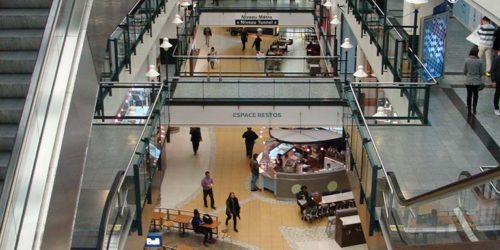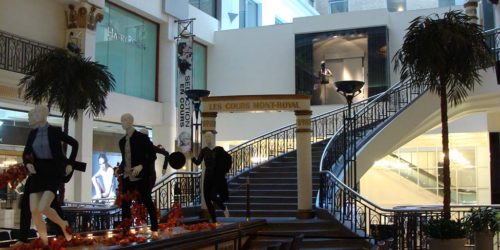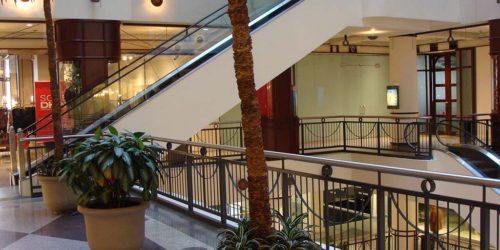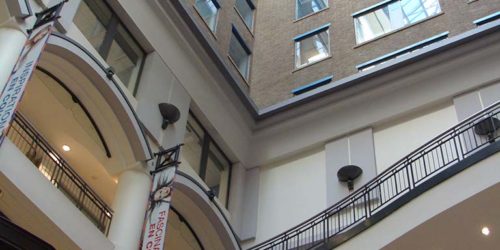PATH (Toronto)
is a network of underground pedestrian tunnels, elevated walkways, and at-grade walkways connecting the office towers of Downtown Toronto, Ontario, Canada. It is more than 30-kilometre (19 mi) long. According to Guinness World Records, PATH is the largest underground shopping complex in the world with 371,600 square metres (4,000,000 sq ft) of retail space.
The PATH network’s northerly point is the Toronto Coach Terminal at Dundas Street and Bay Street, while its southerly point is Waterpark Place on Queens Quay. Its main axes of walkways generally parallel Yonge Street and Bay Street.
RÉSO (Montreal)
The Underground City/ La Ville Souterraine is the name applied to a series of interconnected office towers, hotels, shopping centres, residential and commercial complexes, convention halls, universities and performing arts venues that form the heart of Montreal’s central business district, colloquially referred to as Downtown Montreal. The name refers to the underground connections between the buildings that compose the network, in addition to the network’s complete integration with the city’s entirely subterranean rapid transit system, the Métro. Moreover, the first iteration of the Underground City was developed out of the open pit at the southern entrance to the Mount Royal Tunnel, where Place Ville Marie and Central Station stand today.
Though most of the connecting tunnels pass underground, some passageways and all the principal access points are located at ground level and it has a few skywalks. In this regard, the Underground City is more of an indoor city (ville intérieure) than a truly subterranean city, although there are vast commercial sectors located entirely underground.
The network is particularly useful during Montreal’s long winters, during which time well over half a million citizens are estimated to use it every day. The network is largely climate controlled and well-lit, and is arranged in a u-shape with two principal north-south axes connected by an east-west axis. Combined, there are 32 kilometres‘ worth of tunnels over twelve square kilometres of the most densely populated part of Montreal. In total, there are more than 120 exterior access points to the network, not including the sixty or so Métro stations located outside the official limits of the Réso, some of which have their own smaller tunnel networks. Some of the city’s larger institutions, namely McGill University, the Montreal Museum of Fine Arts, Concordia University and the Université de Montréal, also have campus tunnel networks separate from the Underground City.
